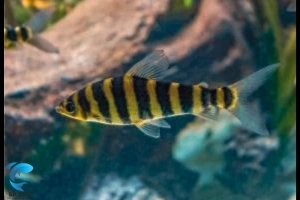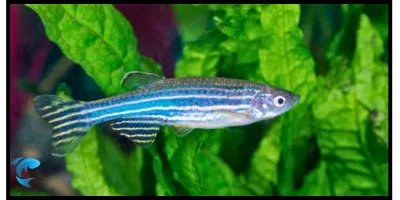Barred Anglefish: Discover The Secrets of Barred Angelfish
Published: 5 May 2024
Welcome to the fascinating world of Barred Angelfish! In this blog, we delve into the crucial secrets of this captivating creature of the underwater world. Additionally, we explore the complete aquarium care guide for this charming fish.
Are you curious about how to take care of Barred Angelfish in captivity? Look no further! Here, you can find all the essential guides about this colorful fish. Let’s explore more!
What is Barred Angelfish?
Barred Angelfish are known for their striking appearance and colorful body. The scientific name of the Barred Angelfish is “Centropyge Multifasciata,” and it is also known as the Multibarred Angelfish. This species features distinctive black and yellow bars on its body, with captivating eyes adding to its allure.
With a white tail adorned with black speckles, the multibar Angelfish exhibits a unique and captivating look. Its interesting behavior further entices people to make it a part of their aquarium. Join us as we uncover the amazing facts and secrets about the Barred Angelfish.
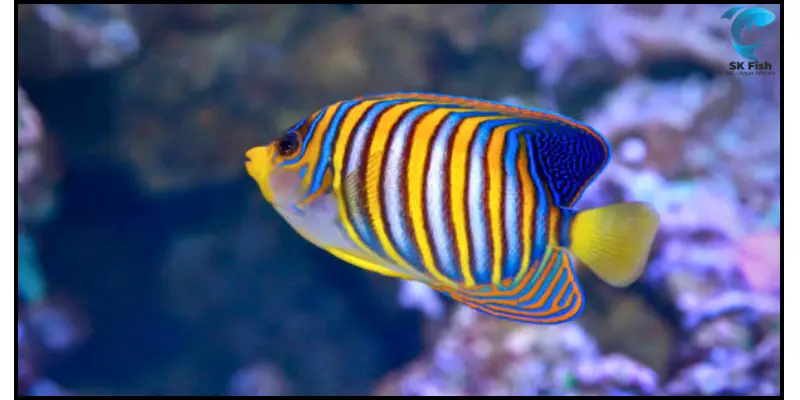
Common Names
Barred Angelfish are known by different names due to their distinctive body patterns and colors. Some common names for this species include:
- Banded Angelfish
- Banded pygmy
- Arched Angelfish
- Many-banded Angelfish
- Half-circled Angelfish
- Multi-banded Angelfish
- Semicircle Angelfish
- Multi-barred Angelfish
- Arched Bar Angelfish
Weight and Size
The size of the adult Barred Angelfish typically ranges from 4 to 6 inches in length. As for weight, it depends on factors such as diet, age, and environmental conditions. However, Barred Angelfish generally weighs between 1 to 2 pounds.
Lifespan and Reproduction
The lifespan of every species depends on various factors such as diet, care, and environmental conditions. However, the average lifespan of Barred Angelfish is 5 to 10 years in captivity, while in the wild, it can extend to 15 years.
Like other angelfish, all individuals start as females, and as they mature, some may change their sex to male. The reproduction system of multibar Angelfish involves a process where the male releases sperm into the water, and the female releases eggs into open water. Due to the adhesiveness of the eggs, they stick to nearby surfaces.
Rearing the fry can also be challenging and requires specialized care, including proper tank setup, diet, and feeding routines.
Aquarium Care Guide For Barred Angelfish
Barred Angelfish is a saltwater fish, making them dazzling additions to any aquarium because of their beauty. However, these gorgeous species require specific care to thrive in captivity.
It is crucial to provide a suitable environment for every species according to their behavior and preferences. But don’t worry, here you will find everything you need to know about this gorgeous species.
Here’s a detailed guide
Tank Setup
The most important aspect of keeping any fish is setting up the tank properly. For multibar Angelfish, it’s crucial to provide ample swimming space. A minimum tank size of 70 gallons is recommended for a single adult angelfish. If you plan to keep multiple pairs of angelfish, it’s important to increase the tank size to at least 120 gallons.
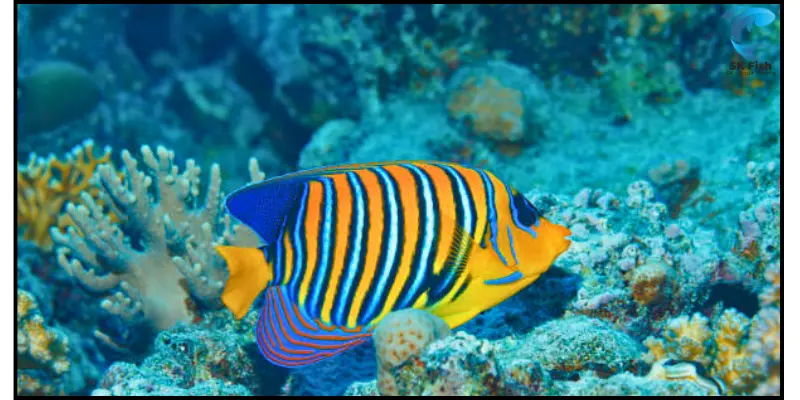
Tank Decor
Creating a natural environment is essential for the well-being of Barred Angelfish. Establish a well-decorated tank with plenty of hiding spots, caves, crevices, and overhangs so they can feel secure. These features also help to promote the growth of algae, which serves as a natural food source for these species. Additionally, secure the tank with a strong steel lid to prevent any accidental jumps.
You can use live rocks, driftwood, and substrate to create a natural wild environment. However, be mindful to avoid overcrowding in the aquarium, as it can restrict swimming space and lead to stress for the fish.
Water Parameters
Water quality is crucial for the health of Barred Angelfish. Maintain stable water conditions to ensure your fish stay healthy. The recommended water temperature for multibar Angelfish is between 72 to 76 degrees Fahrenheit. The pH level should ideally be maintained between 8.1 to 8.4, and the salinity should range from 1.020 to 1.025. Regular monitoring of these parameters is essential to provide an optimal environment for your angelfish.
Tank Mates
Barred Angelfish are generally peaceful, but they can be territorial, especially with fish that have similar colors or body shapes. Therefore, selecting compatible tank mates for angelfish is crucial. Some suitable tank mates for Barred Angelfish include tangs, wrasse, large angelfish, and clownfish.
Diet For Barred Angelfish
Multibar Angelfish are omnivorous species, so providing a varied diet is essential for their well-being. Offer a diverse range of foods in captivity, including high-quality flakes, pellets, shrimp, algae, invertebrates, brine shrimp, krill, sponges, and fresh vegetables.
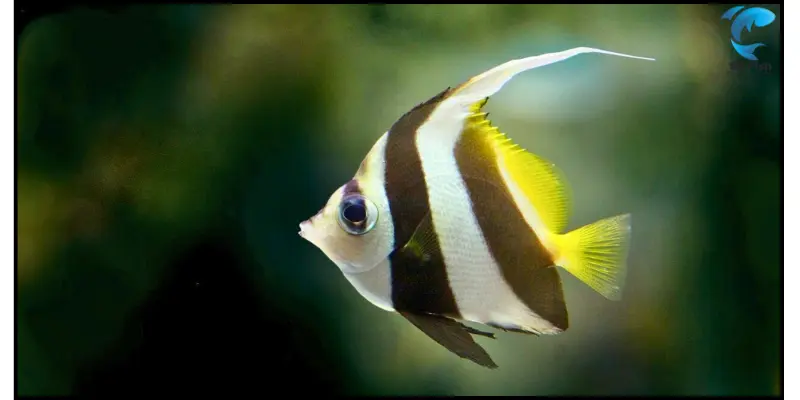
Conclusion
In conclusion, we’ve delved into the fascinating secrets of the beautiful Barred Angelfish. We’ve discussed all the essential information about caring for this species in captivity, including crucial aspects such as size, weight, lifespan, reproduction, tank setup, tank decor, tank mates, and diet. This comprehensive guide provides ample information to establish a suitable and well-decorated tank for these gorgeous fishes. Don’t forget to share your thoughts in the comment section!
FAQs
How big do barred angelfish get?
The size of Barred Angelfish depends on various factors such as diet, care, and age. However, Barred Angelfish typically reach a size of 4 to 6 inches when fully grown.
Do angelfish eat other fish?
Generally, angelfish are considered a semi-aggressive species. While they do not typically prey on other fish, they may exhibit aggressive behavior and may not hesitate to eat smaller fish. Therefore, it is important to choose the right tank mates to keep with angelfish and avoid selecting very small fishes.
Are angelfish aggressive?
Angelfish, including Barred Angelfish, can be aggressive in certain conditions, especially when they feel threatened by other fishes. However, in a large, well-decorated community tank, they can coexist peacefully with other fishes.
What do angelfish eat?
Angelfish are omnivorous species, requiring a varied diet of high-quality food. They consume a variety of foods such as flakes, pellets, shrimp, algae, invertebrates, brine shrimp, krill, sponges, and fresh vegetables.

SK Fish is your trusted source for practical fish care tips and delicious seafood recipes. Our team is dedicated to providing reliable, well-researched content for fishing enthusiasts and home cooks alike.

- Be Respectful
- Stay Relevant
- Stay Positive
- True Feedback
- Encourage Discussion
- Avoid Spamming
- No Fake News
- Don't Copy-Paste
- No Personal Attacks



- Be Respectful
- Stay Relevant
- Stay Positive
- True Feedback
- Encourage Discussion
- Avoid Spamming
- No Fake News
- Don't Copy-Paste
- No Personal Attacks
